Well folks, this one’s a doozy. A friend, Brian R., who regularly volunteers at the B&ORRHS just sent me one heck of an image. You may recall a few months back he sent me a couple images of the Bethesda Freight House under construction. Well, here is one more that was shot weeks prior to the other one and shows a WHOLE LOT of the surrounding area. I get pretty excited when I get really nice photos of Georgetown Branch subjects, but this one is really very special and so chock-full of details, it’s hard to know where to begin. Let’s dig in. First, here is the full image:
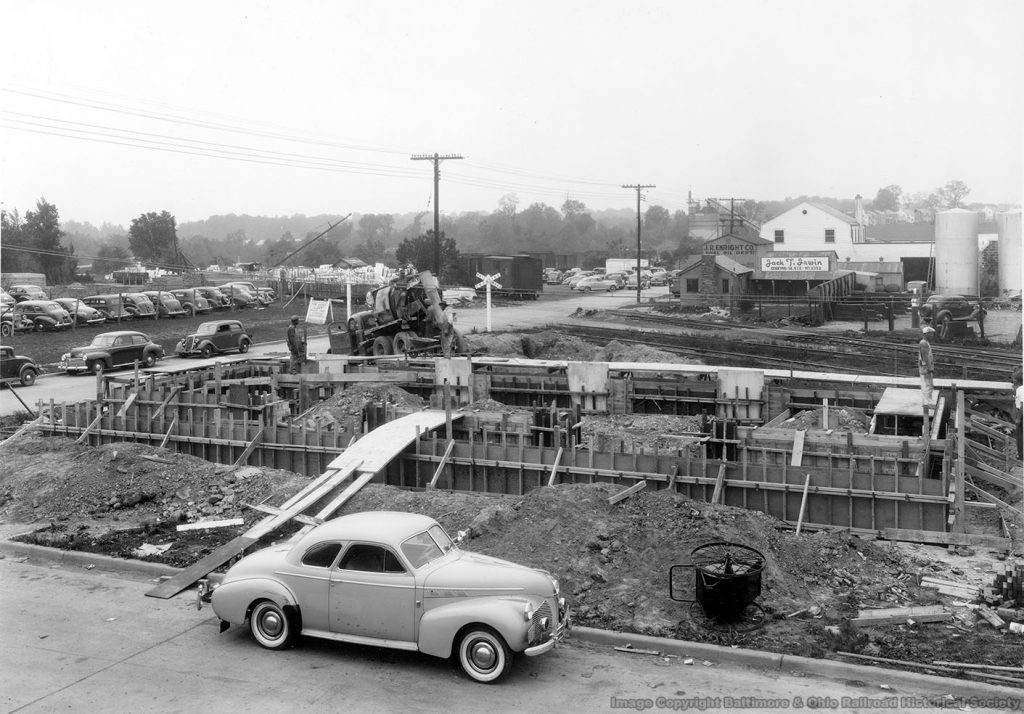
So there’s a lot in the image and what is funny to me is the construction of the freight house is not the primary interest. I picked out several things of interest. Let’s take a tour around the photo. First up is the yard area, largely visible behind the Maloney Concrete cement mixer. The yard is choc-a-block full of what appears to be marble or limestone. I have references to stone being delivered to Chevy Chase for the Washington National Cathedral and of course the extension of the line in Georgetown to serve construction of the Lincoln Memorial, but I have never heard of any stone deposited in Bethesda on a scale such as this! Have a closer look:

As far as the eye can see, stacks and racks and car loads of stone. Impressive! There are even two unloading devices; one, a stiff leg derrick visible to the left and a crane of some sort, likely an early Burro Type 15 or 20, similar to this one seen here.
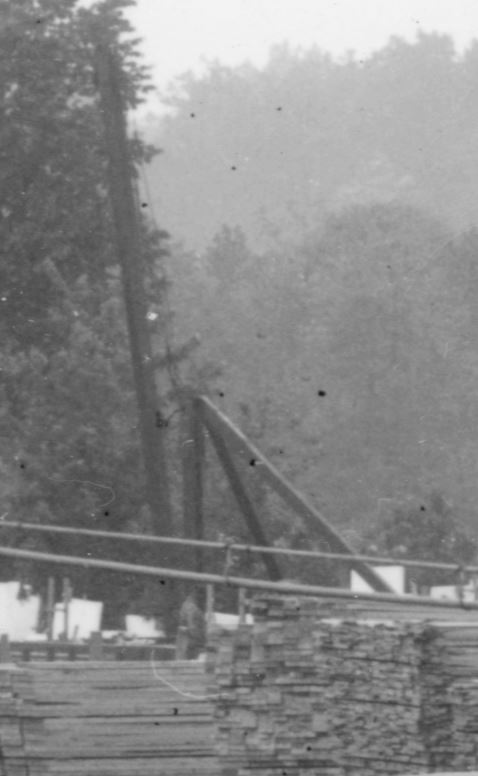
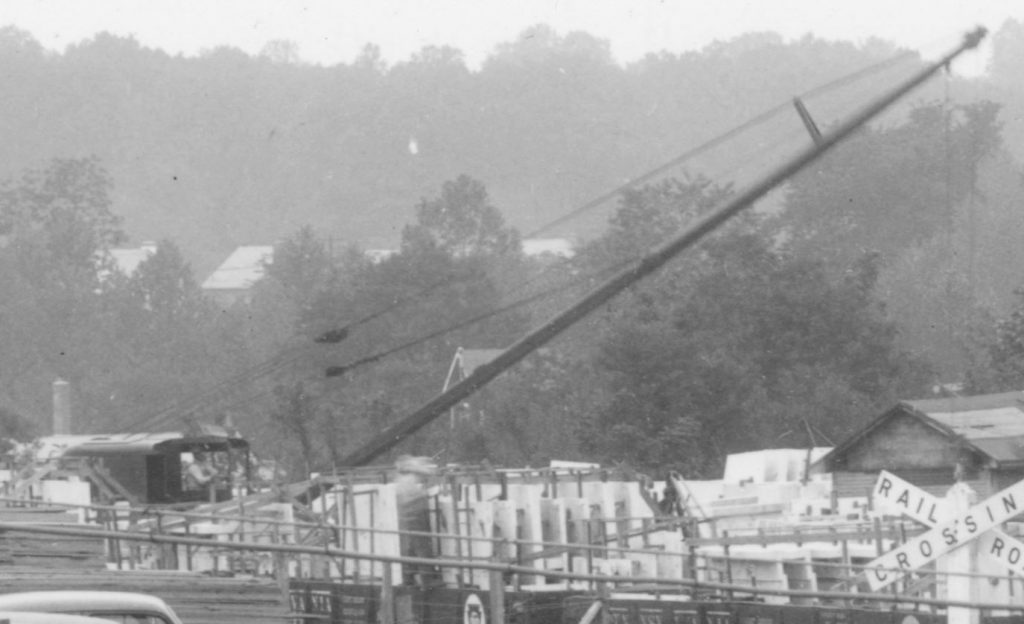
Getting a bit closer to the nearest gondola, I can see that it’s a PRR gon, and the number looks to me like 368270. A quick search in the 1943 ORER shows that this falls into the PRR GB class GRA, constructed around 1916 and modified from the GR class by adding 3′ to the overall length. These cars were somewhat plentiful in 1943 with 590 listed in the ORER. (By 1953 this number had dropped to only 31!) Thankfully, Westerfield offers a resin kit of this car, for anyone interested in modeling it.
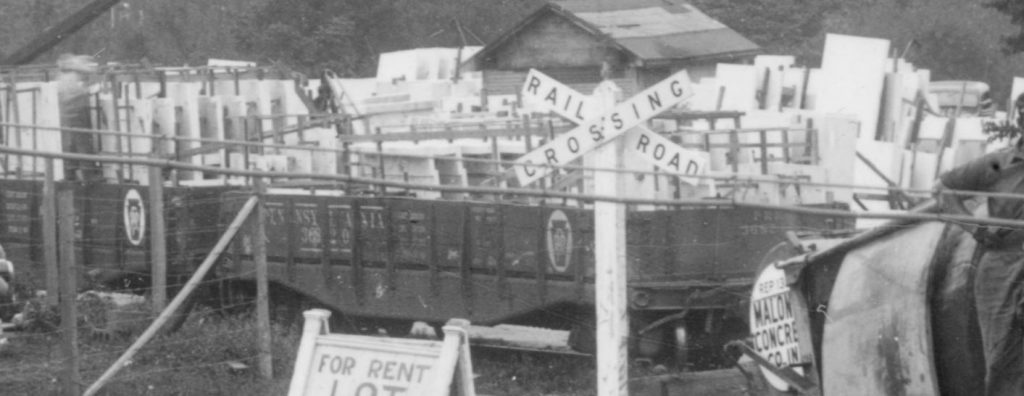
There are other GRA class gons in the yard, identifiable by the slightly stretched space between the middle braces.
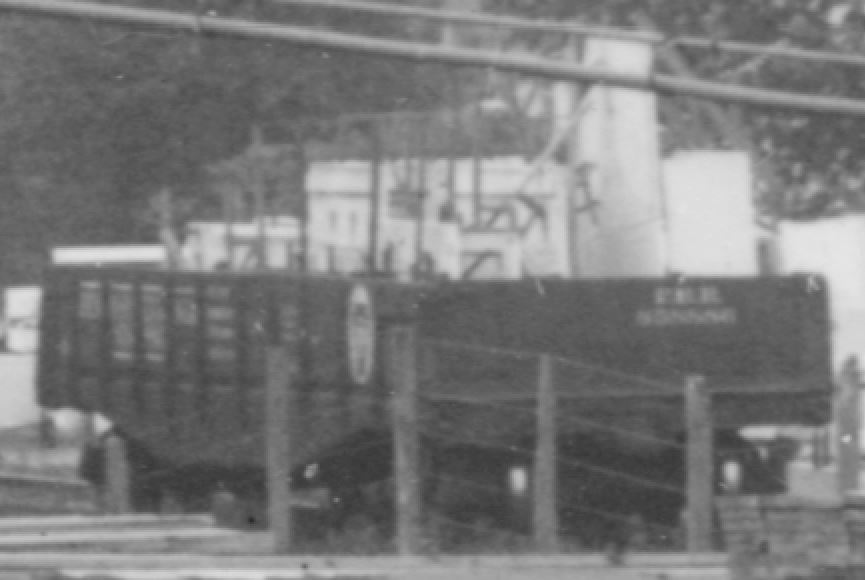
Let’s look at the other freight cars visible in the photo:

The first one is obviously a PRR car and appears to me after some careful study to be numbered something close to 123951 – my confidence is medium, here. If this is accurate, and based on the overall design I think it is, this would be a class X28a boxcar, rebuilt from door-and-a-half X28 class cars in 1933 and of which there were 4957 listed in the ORER in 1943. (In 1953 there were still 3676 listed.) Some info here. Thankfully, Funaro & Camerlengo offers a resin kit of this car if you’d like to model it in HO.
Decals here.
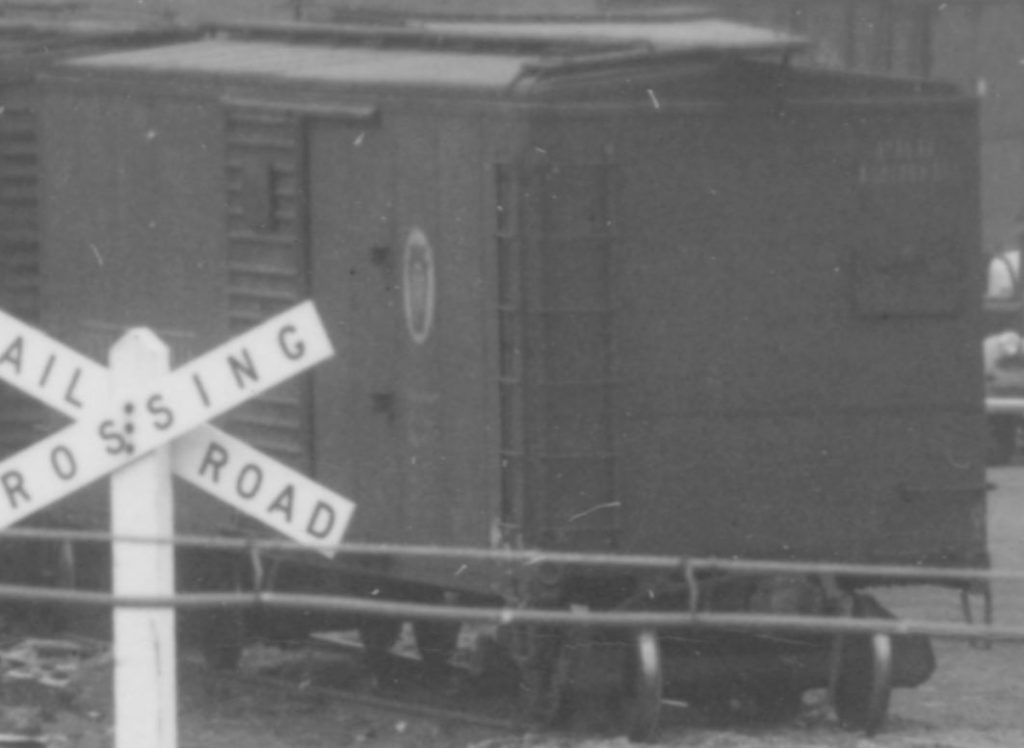
The next car appears to be another PRR car, but there’s much less to go on. My guess based on the panels and bracing is something similar to an X26 class boxcar, as they were plentiful; in 1943 the PRR had over 6000-some listed. Again, Funaro & Camerlengo offers a resin kit of this car as well as Westerfield.

The rest of the cars are so far away it’s very hard for me to discern. Perhaps some of the steam era freight car gurus can pick them out. 🙂 Next up, check out the lumber in the Einsinger lumber yard:

The siding is past those stacks of lumber. It’s interesting; at some point in the next few years, Einsinger would build more structures in this area to expand the lot. The cars occupy a space which would be the site of a long lumber shed. Photos from the late 40s and 50s will show the yard expansion. Oddly enough, in later years, the yard would once again be a parking lot and eventually a residential building. There was a curious sign off to the right, next to those cars:
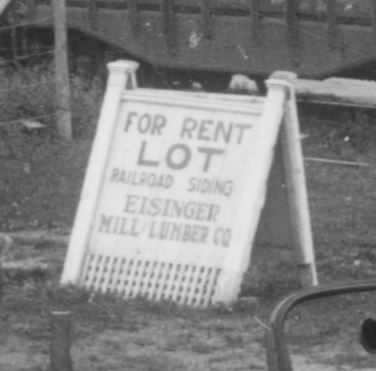
Would love to know the story behind that sign. Heading back over to the right is the Irwin Roofing shop. This is a particularly interesting spot, as it’s a showroom of sorts and there is SO much to see.
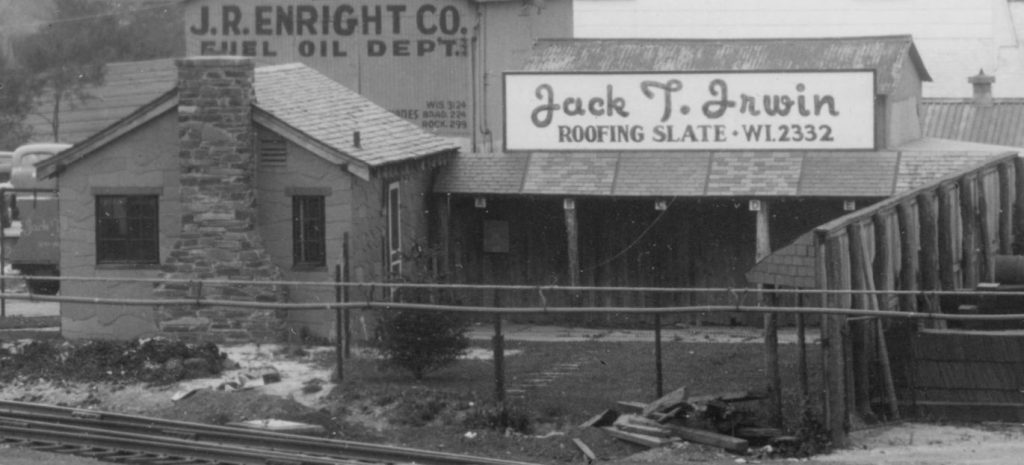
Looking closely, I see a well-maintained front lawn with a short walkway up to the small shop and a nice decorative sign hanging out front. The shop itself is adorned with stone all around. Coming out into the back yard, there is a small courtyard with an overhang, the roof of which features various types of slate roofing, each labeled with a letter; A, B, C and so on. A really neat detail! Irwin Stone is still in business today! Behind Irwin Roofing is Enright Oil:
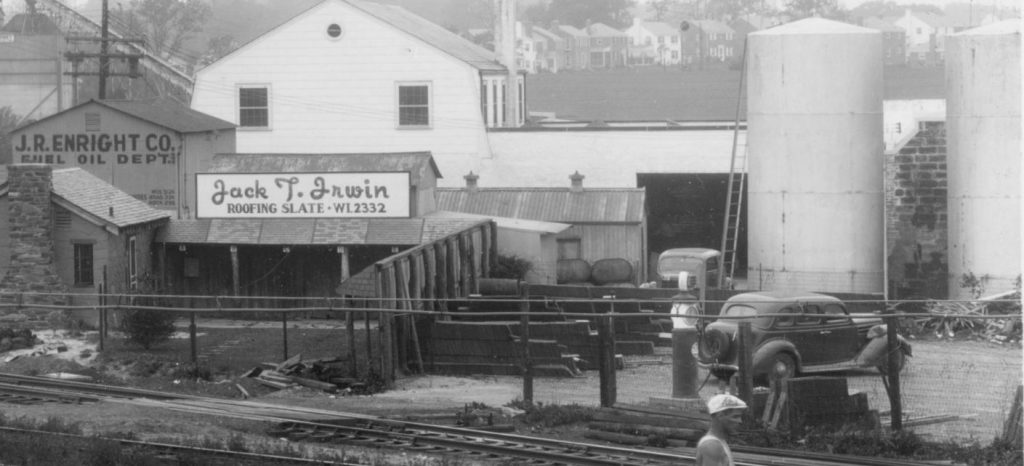
Enright is interesting. I would imagine they unloaded from the second siding coming off the main, which would be just to the right of their plant. Unfortunately the photo cuts off there but we get some idea of their storage yard to the right. A couple storage tanks are visible as well as some bins (coal?) and a nifty gas pump which may or may not be in use there in the yard. Perhaps to fuel up their delivery trucks. I plan on modeling part of this on my layout. Obituary for J.R. Enright Jr. Also of interest here is the access to the yard with the small crossing over the yard tracks. In the distance is Maloney Concrete:

Speaking of Maloney Concrete, here is its mixer pouring ready-mix for the B&O freight station footers:
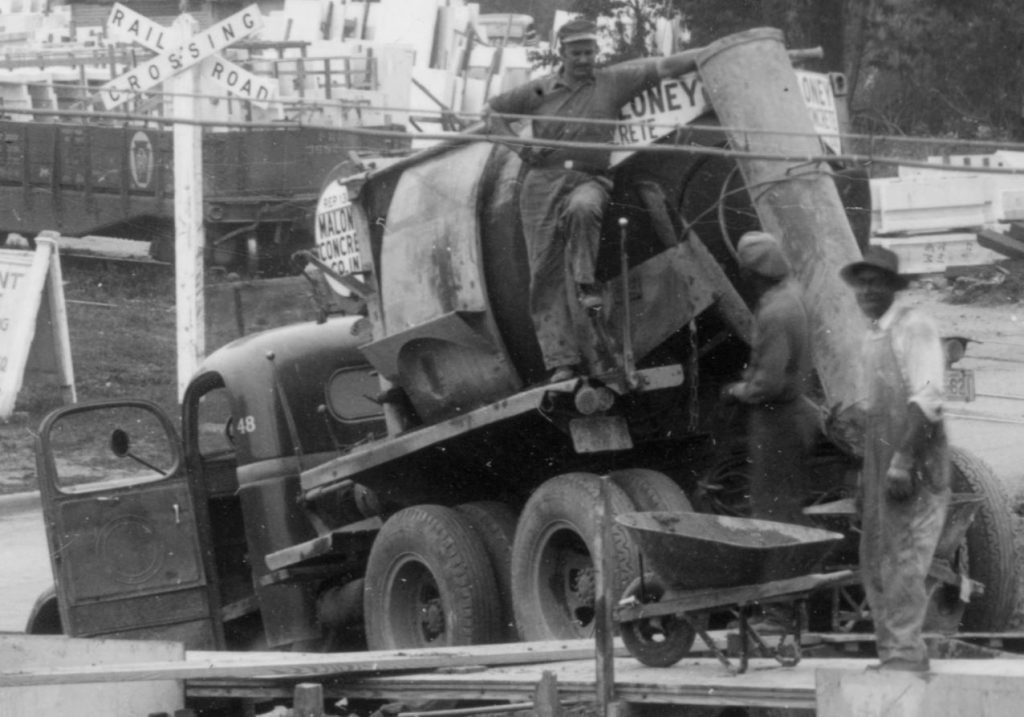
And lastly, it’s hard to ignore all of those lovely late 30s – early 40s automobiles, but since I’m no expert, I’ll focus on just one. The up front and center 1940 Pontiac Torpedo Coupe:
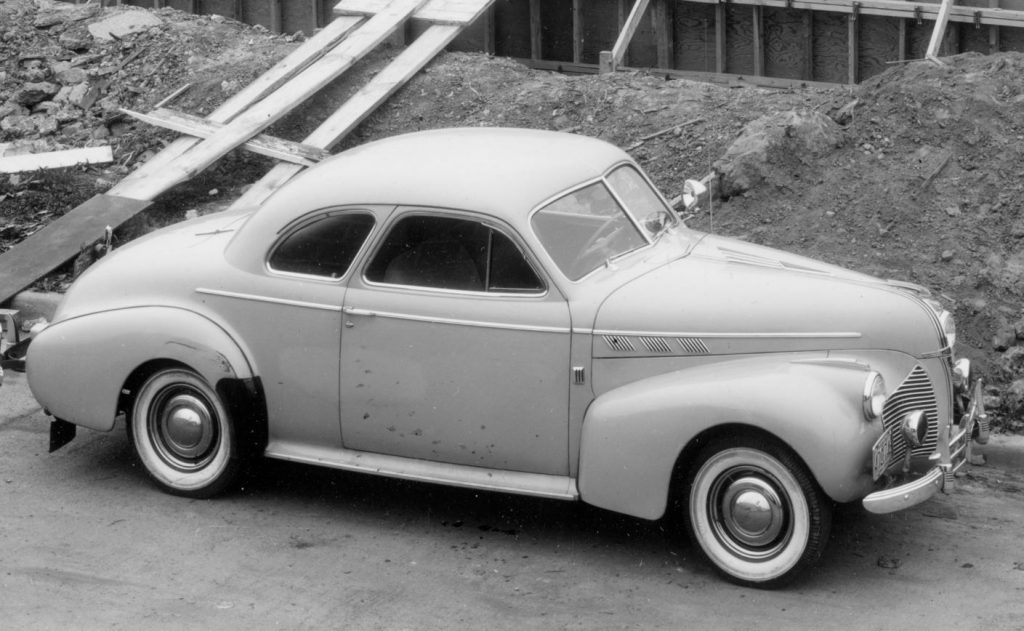
Well, I hope you enjoyed the photo and the details herein. What are some of your favorite finds? What did I miss?! I have many questions such as what was all the stone for? What cranes were in the yard and during what years? How did Enright Oil receive their fuel? When did Eisinger Lumber expand and who were they renting the yard to? Also of note, the buildings along “Bethesda Row” had yet to be built. And to think, roughly seven months after this photo was taken, the USA would enter into WWII, further pushing the area to develop and grow. And yet, still no one has explained the greatest mystery of all; why did the Bethesda freight house never have rail service? The design is a curious one, with a garage for storage yet no rail service. That’s a discussion for another time.
Great work, Ben. We can compare and contrast this image with what we see in similar DC-area rail crossings of that era, notably Silver Spring, Kensington, and Rosslyn. All of these featured a nest of sidings, for which the common denominator was coal. Accordingly, we see storage bins with the stuff awaiting local distribution by truck – or perhaps the few mule-carts still around in 1941. Industrial activity dating back to the turn of the century (even if small scaled) was often coal-fired, so it was imperative that they locate close to the rails. Stationary boilers would have been the most typical coal consumers. Rising real estate values, plus the rapid switch from coal to natural gas during the 1950s would displace the activities seen here. The economic viability of the Georgetown Branch tanked as a result.
Here is your concrete truck body in HO: https://www.shapeways.com/product/QWQKTHWMM/ho-scale-horizontal-drum-transit-mixer?optionId=60711255&li=shops